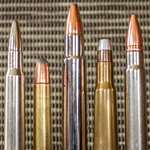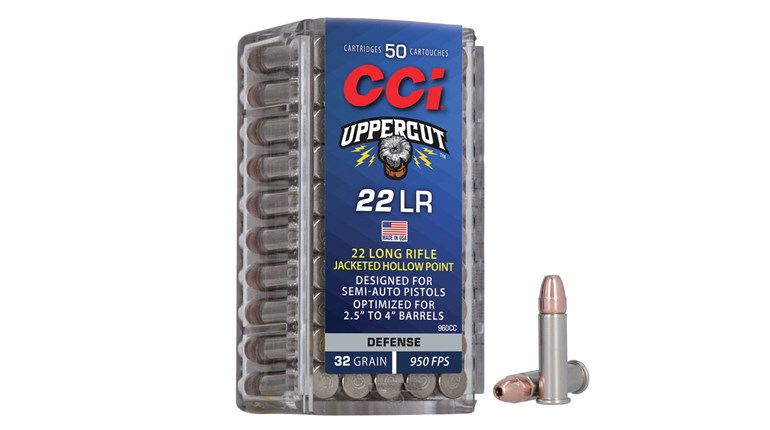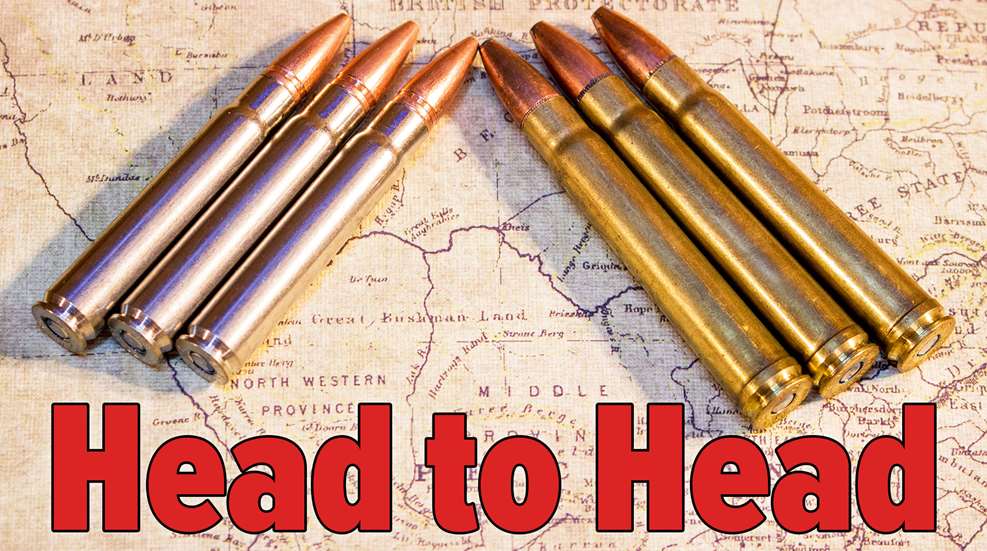
Standing on the edge of an open field, with the sounds of the beaters and their dogs emanating from the thicket, my eyes widened as the keiler—as the really big wild boars are called in Poland—boiled from the brush. I swung the Heym rifle until the red dot crossed the pig’s shoulder and broke the trigger, sending a 230-grain Norma EcoStrike bullet into his vitals. It was the first animal I had taken with the classic 9.3x62mm Mauser.
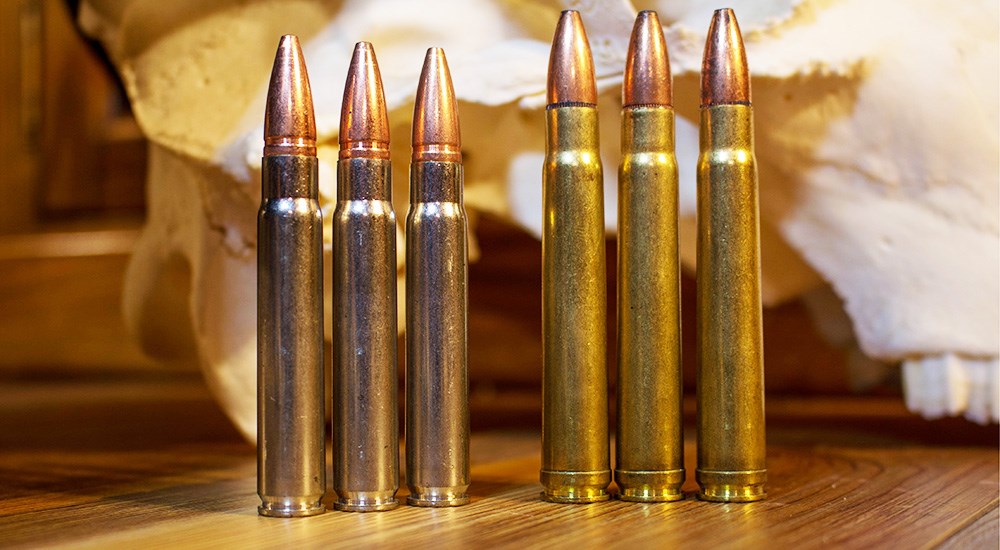
Rewind the clock thirteen years, and you’d find me in South Africa, with a Winchester Model 70 in hand, chambered for the timeless .375 H&H Magnum, standing over a fine eland bull. I’d spent years with that rifle, and knew it well; I had used it to take that eland at just over 400 yards across the veldt. That rifle and I would take numerous other species on that safari, as well as using that rifle for bison on the Great Plains, as well as in Quebec for caribou.
Among those cartridges which are considered the bare minimum for an all-around choice—and that includes the African heavyweights—the 9.3x62mm Mauser and .375 H&H Magnum are undoubtedly two of the best. They represent versatility in that there are bullet choices which can be made to suffice as a plains-game/deer cartridge, yet will run heavy enough to effectively take game as large and dangerous as the African elephant, Cape buffalo and grizzly bear. Let’s toss these two in the ring and see who comes out on top.
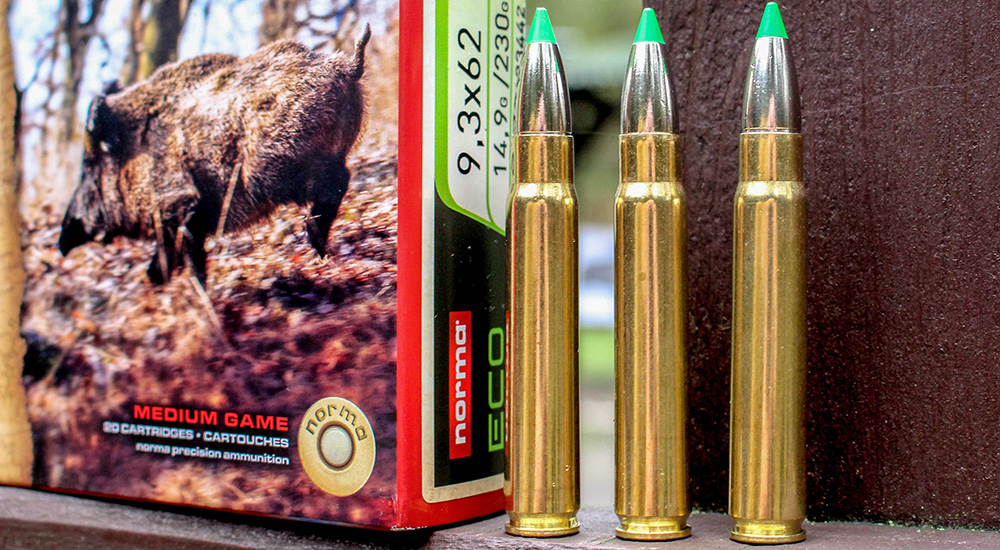
The 9.3x62mm is the older, and smaller of the two cartridges. Designed by Otto Bock in 1905, the rimless cartridge has a visual similarity to the earlier 7x57mm and 8x57mm cartridges, if there are slight dimensional differences. Bock’s brainchild uses a .366-inch-diameter bullet, and a case length of 2.441 inches, or 62mm. The 9.3x62mm uses a rim diameter of 0.470 inches (just slightly smaller than the 57mm Mauser cases), and a 17-degree shoulder for headspacing (our own .30-06 Springfield uses a slightly longer case, the .473-inch-diameter case head of the 7x57mm Mauser and a 17½-degree shoulder angle). Bock’s cartridge was designed to work perfectly in the Mauser 98 rifle—it is often referred to as the 9.3x62mm Mauser—and became very popular in the German holdings in Africa, especially German East Africa, which would shortly be known as Tanganyika after WWI, and ultimately known as Tanzania.
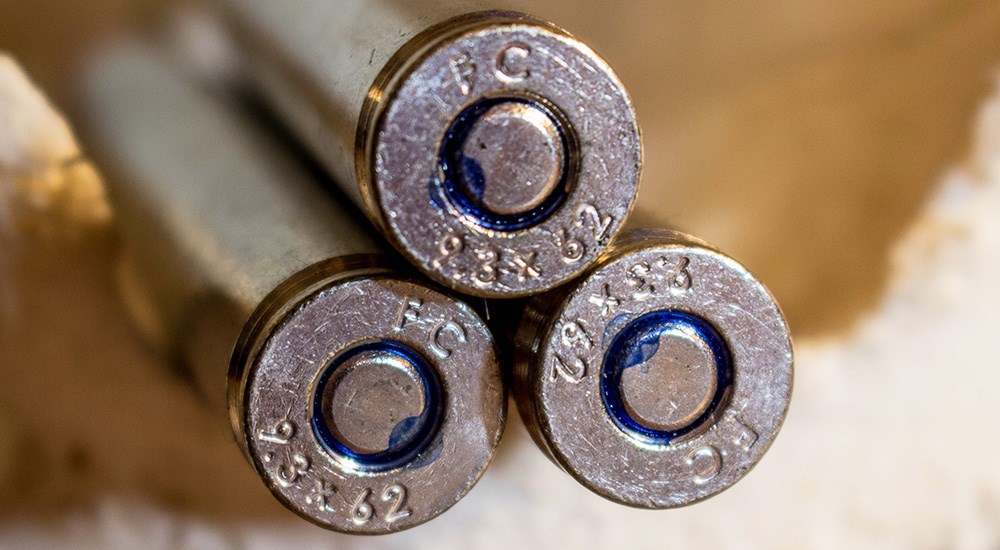
The 9.3x62mm can effectively use bullets weighing between 230 and 300 grains, at reasonable velocities, in a package which is surprisingly easy on the shoulder. The most common loads use the 286-grain bullets, at a muzzle velocity of 2350 to 2360 fps, for just over 3,500 ft.-lbs. of muzzle energy. While in comparison to the larger cartridges with heavier bullets—which meet or exceed the 5,000 ft.-lb. mark—the 9.3x62mm may seem anemic, the Sectional Density of the bullets employed ensure penetration on even the thick-skinned animals, and the low recoil allow the shooter to accurately place their shot. Modern loads like the 230-grain Norma EcoStrike monometal I used in Poland give the owner of a 9.3x62 a bit more flexibility on lighter game. To add to the available choices, there are both solid and softpoint bullets available, in both cup-and-core and monometal construction.
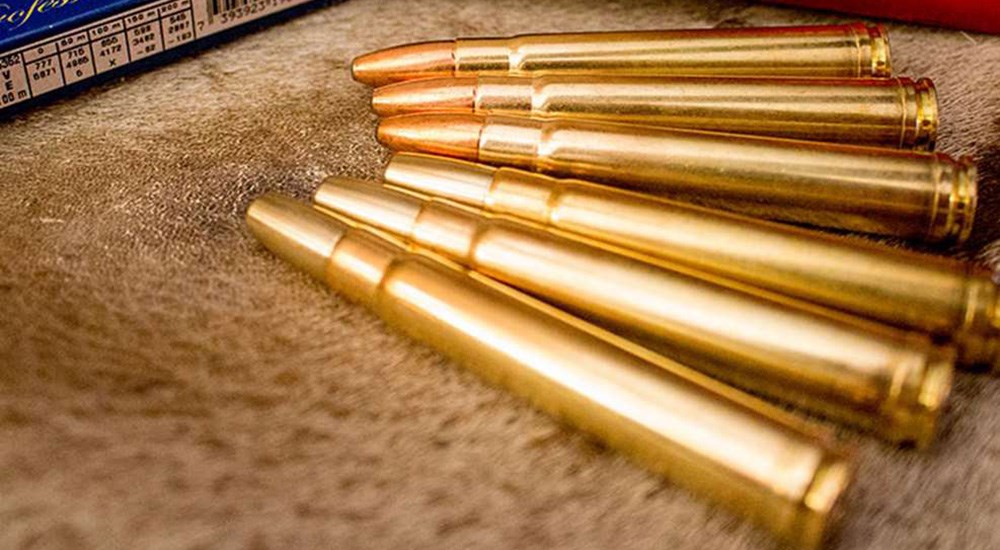
The .375 Holland & Holland Belted Magnum was not the first design from the famous British company to wear that famous belt of brass—that belongs to the earlier Velopex—but it remains the most popular offering from H&H. Arriving on the scene in 1912, though it didn’t really take a firm hold until the post-WWI era, the .375 H&H Magnum is still classified as a medium bore by the classic British system. Using a bullet of nominal diameter, a slight 15-degree shoulder, and a belt of brass at the base for headspacing, the .375 H&H Magnum has a case length of 2.850 inches and a cartridge overall length of 3.600 inches, requiring a magnum-length action.
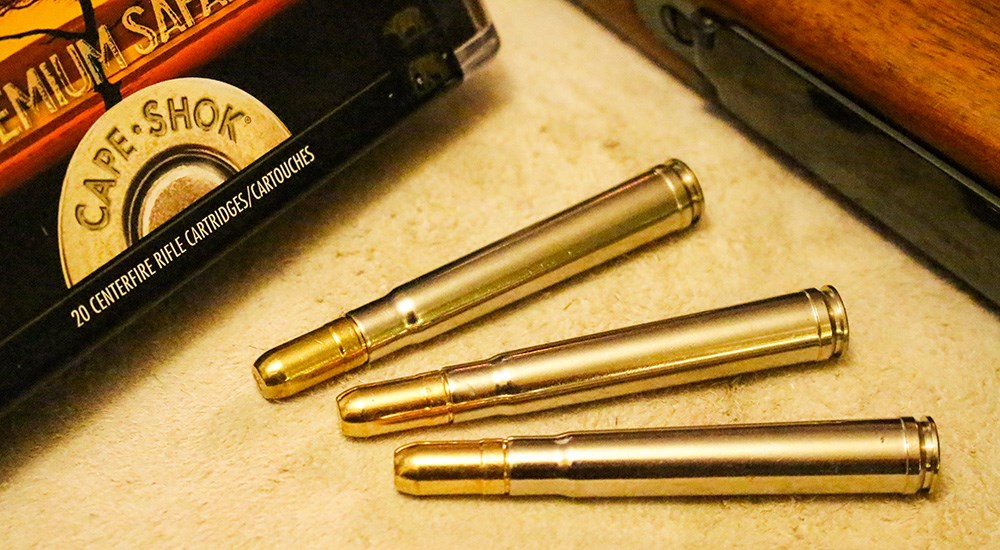
The .375 was released with three differing bullet weights: a 235-grain load for lighter game on the African plains and the mountains of India, a 270-grain load for larger antelope species, as well as for the cats, and a 300-grain load for the heavy stuff. The latter has gone on to become the most popular all-around choice, and is my personal favorite as well. Modern bullet choices include bullets as light as 210 grains, and as heavy as 350 grains in factory ammo and 380 grains in component form. The classic formula is a 300-grain bullet at a muzzle velocity of somewhere between 2450 and 2550 fps, generating right around 4,000 ft.-lbs. of energy at the muzzle. This combination has been one of the most popular choices among visiting sportsmen for decades. After the supplies of Kynoch ammunition for the wide array of British cartridges had dried up, American rifles and ammunition filled the void, and for dangerous game that meant either the .375 H&H Magnum or .458 Winchester Magnum, and the lower recoil and extended range of the .375 H&H had the greater appeal to the hunter.
So, with bullets very close in diameter and weight, and with comparable field performance, which of these comes out on top? Starting with the legal requirements, there are some countries which will require a minimum of .375-inch-diameter bullets for dangerous game—Tanzania and Zambia come quickly to mind—which takes the 9.3mm cartridges off the table. But, Zimbabwe and Mozambique will allow the 9.3s, though Zimbabwe requires a minimum of 3,900 ft.-lbs. of energy for dangerous game, and the 9.3x62mm doesn’t quite make that mark. However, make no mistake, the 9.3x62mm is a viable cartridge for Cape buffalo and elephant, providing the proper bullet is utilized, and many hunters have put some amazing trophies in the salt with a 9.3x62mm.
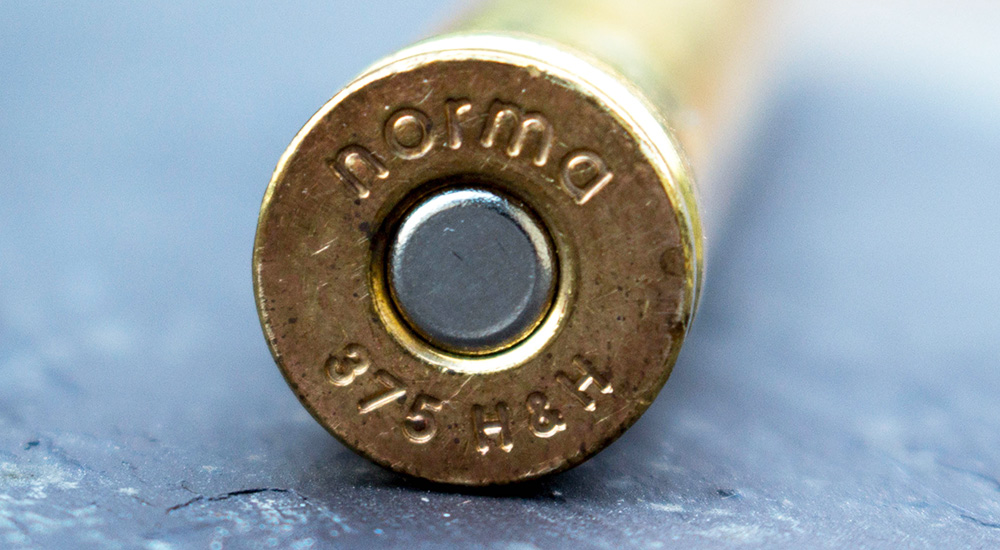
The .375 H&H Magnum, being the benchmark for dangerous game cartridges, alleviates any of these issues, and I really can’t name a single instance where dangerous game was the quarry and the .375 H&H—when loaded with a suitable bullet—would be frowned upon. It is flat shooting, in most instances nearly as flat shooting as the .30-06 Springfield, yet can be a stopper with the heaviest bullets. It was the chosen cartridge of Harry Manners and Wally Johnson—two famous Mozambique ivory hunters—and has been the cartridge of choice of more than one of the Professional Hunters on my safaris.
Among dangerous-game cartridges, both of these are very easy on the shoulder, but I have found that the 9.3x62mm is the sweeter-shooting of the two. If a hunter were highly recoil sensitive, the 9.3x62mm is the solution to that issue, as it will handle the largest of bears, big cats and the thick-skinned animals without turning the shooters shoulder into hamburger. That said, I have found that the .375 H&H can also be handled by the average shooter, provided a good stock fit is present and they have practiced with their rifle from field positions. There are many more options when it comes to factory ammunition for the .375 H&H Magnum than there are for the 9.3x62mm, with all the major players offering something for the classic British cartridge. Ammo for the three-seven-five will be much more readily available in remote camps in Africa, or in the backwoods of Alaska, and while I love the 9.3x62mm for the smaller case diameter, the .375 H&H remains one of the most popular cartridges in this class.
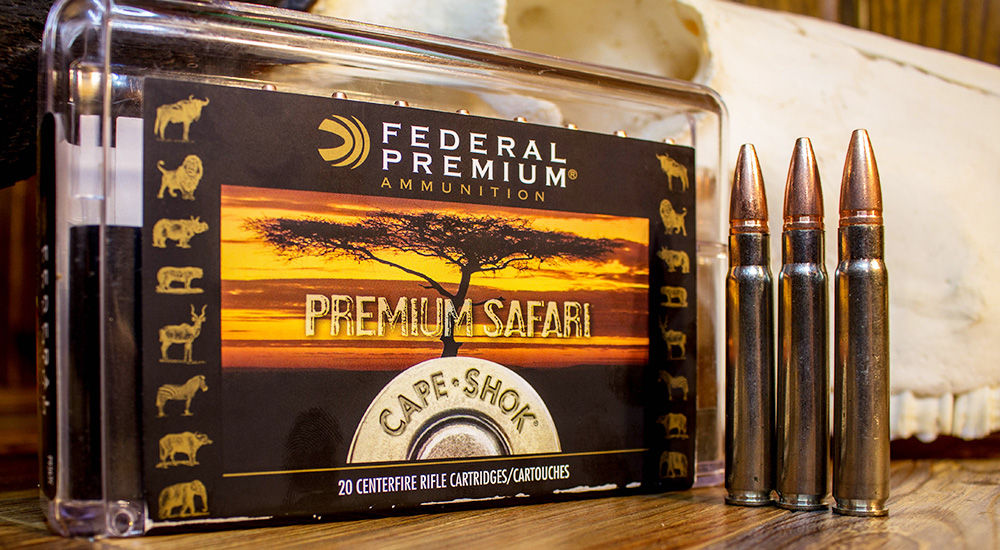
Couple the ammo availability with the wider range of bullet choices, and the .375 H&H wins this competition for me. The cartridge can be used for whitetail deer—my wife uses hers topped with 235-grain Cutting Edge Raptors—when loaded with lighter bullets, yet when loaded with the 30- or 350-grain slugs will be equally at home in the mopane thickets of Zimbabwe or the alder thickets of Alaska. The 9.3x62mm is a sound design, and good choice if you can keep it in a consistent supply of ammunition, but the .375 Holland & Holland Belted Magnum might just be the most useful cartridge ever developed.
Looking for previous installments of our "Head to Head" series? We've got you covered.
• .348 Winchester vs. .358 Winchester
• .35 Whelen vs. .375 H&H Magnum
• 7mm PRC vs. 7mm Remington Magnum
• 6.8 Western vs. .270 Winchester
• .218 Hornet vs. .218 Bee
• .338-06 A-Square vs. .35 Whelen
• .308 Winchester vs. .300 Winchester Magnum
• 6.5 Creedmoor vs. 6.5 PRC
• .22 LR vs. .22 WMR
• .30-06 Springfield vs. .300 Winchester Magnum
• .300 Wby. Mag. vs. 8mm Rem. Mag.
• 7mm Remington Magnum vs. 27 Nosler
• .257 Roberts vs. .25-06 Remington
• .300 H&H Magnum vs. .300 Winchester Magnum
• .308 Winchester vs. .338 Federal
• .222 Remington vs. .223 Remington
• .270 WSM vs. 7mm Rem. Mag.
• .22-250 Remington vs. .204 Ruger
• .25-06 Remington vs. 6.5 Creedmoor
• .444 Marlin vs. .45-70 Government
• 7x57mm Mauser vs. .280 Remington
• .300 Win. Mag. vs. .300 Wby. Mag.
• .375 Ruger vs. .375 H&H Magnum
• 7mm-08 Remington vs. .280 Remington
• .280 Remington vs. .280 Ackley Improved
• 7mm vs. .30 Caliber
• 6.5 Weatherby RPM vs. 6.5 PRC
• .338 Win. Mag. vs. .340 Wby. Mag.
• .300 RSAUM vs. .300 WSM
• .500 Jeffrey vs. .505 Gibbs
• 7mm RUM vs. .300 RUM
• .308 Winchester vs. 7mm-08 Remington
• 6.5 Creedmoor vs. .260 Remington
• .303 British vs. 8x57 Mauser
• .30-06 Springfield vs. All Other .30s
• .17 HMR vs. .17 WSM
• .450 Nitro Express vs. .470 Nitro Express
• 350 Legend vs. .35 Remington
• .280 Ackley Improved vs. 7mm Rem. Mag.
• .404 Jeffery vs. .416 Rigby
• .243 Winchester vs. 6mm Creedmoor
• .300 PRC vs. .300 Win. Mag.
• .30-06 Springfield vs. .270 Winchester
• 6.5 Creedmoor vs. 7mm-08 Remington
• 8x57 Mauser vs. .318 Westley Richards
• .358 Winchester vs. .350 Remington Magnum
• .22-250 Remington vs. .220 Swift
• .270 Winchester vs. .270 WSM
• .26 Nosler vs. 6.5-300 Weatherby Magnum
• .458 Win. Mag. vs. .458 Lott
• 7mm Rem. Mag. vs. .300 Win. Mag.
• .243 Winchester vs. 6mm Remington
• 7x57mm Mauser vs. 7mm-08 Remington
• .25-06 Remington vs. .257 Weatherby Magnum
• .338 Winchester vs. .375 H&H Magnum
• .30-30 Winchester vs. .35 Remington
• .257 Roberts vs. .250-3000 Savage
• .270 Winchester vs. .280 Remington
• .35 Whelen vs. 9.3x62mm Mauser
• .416 Rigby vs. .416 Remington Magnum
• .308 Winchester vs. .30-06 Springfield
• .22 Nosler vs. .224 Valkyrie
• .300 Win. Mag. vs. .300 WSM
• .223 Remington vs. .22-250 Remington


















